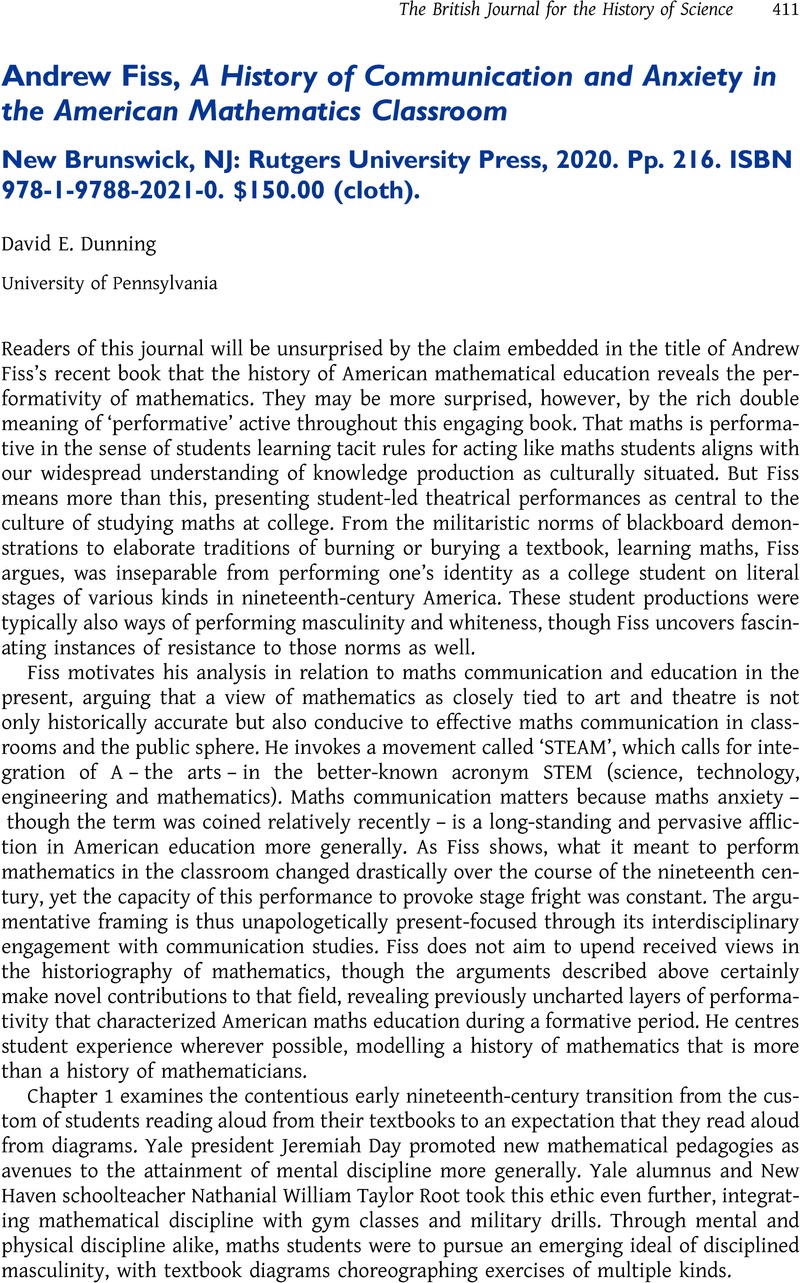No CrossRef data available.
Article contents
Andrew Fiss, A History of Communication and Anxiety in the American Mathematics Classroom New Brunswick, NJ: Rutgers University Press, 2020. Pp. 216. ISBN 978-1-9788-2021-0. $150.00 (cloth).
Review products
Andrew Fiss, A History of Communication and Anxiety in the American Mathematics Classroom New Brunswick, NJ: Rutgers University Press, 2020. Pp. 216. ISBN 978-1-9788-2021-0. $150.00 (cloth).
Published online by Cambridge University Press: 31 August 2023
Abstract
An abstract is not available for this content so a preview has been provided. Please use the Get access link above for information on how to access this content.

- Type
- Book Review
- Information
- The British Journal for the History of Science , Volume 56 , Issue 3 , September 2023 , pp. 411 - 412
- Copyright
- Copyright © The Author(s), 2023. Published by Cambridge University Press on behalf of British Society for the History of Science



